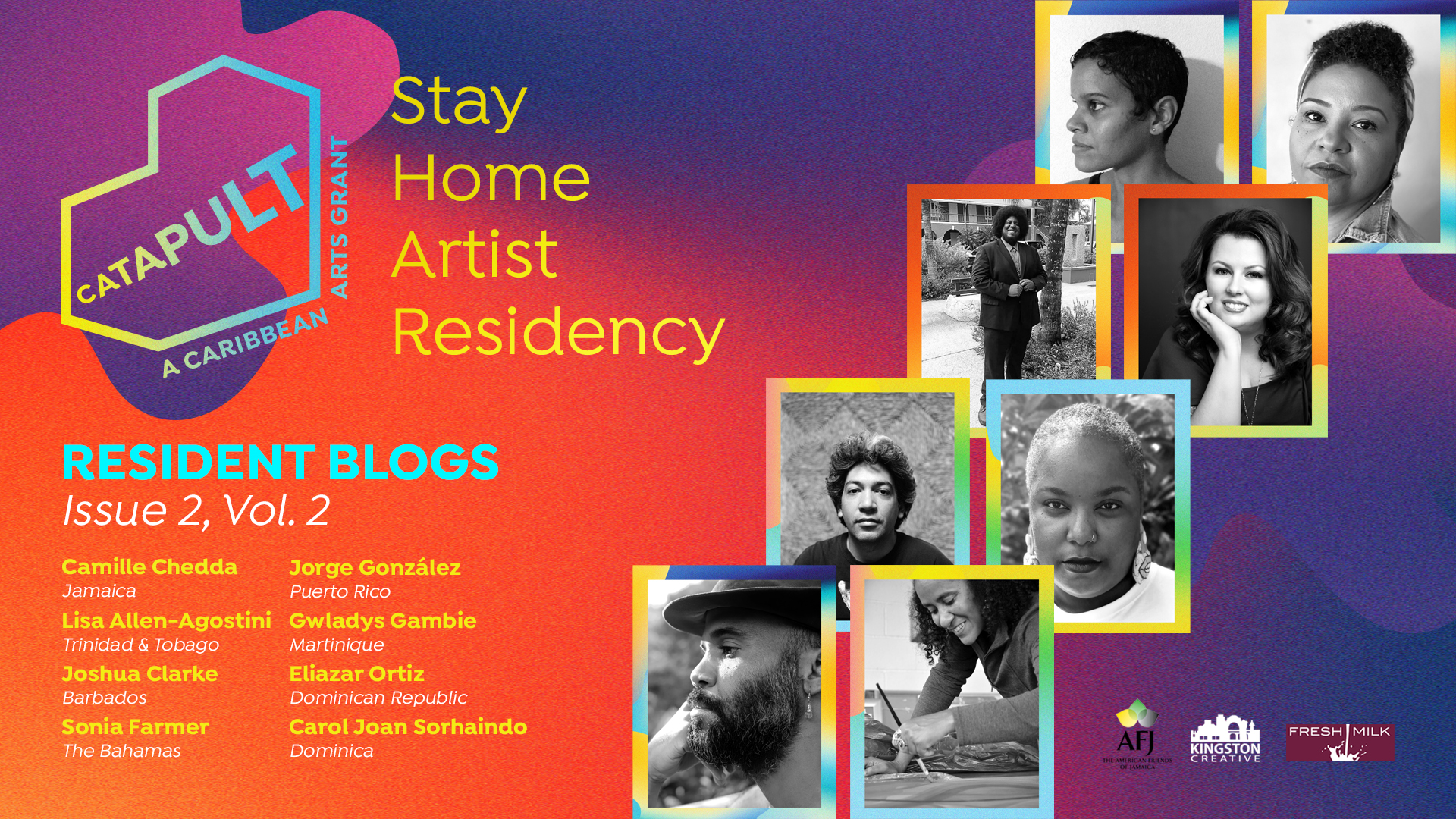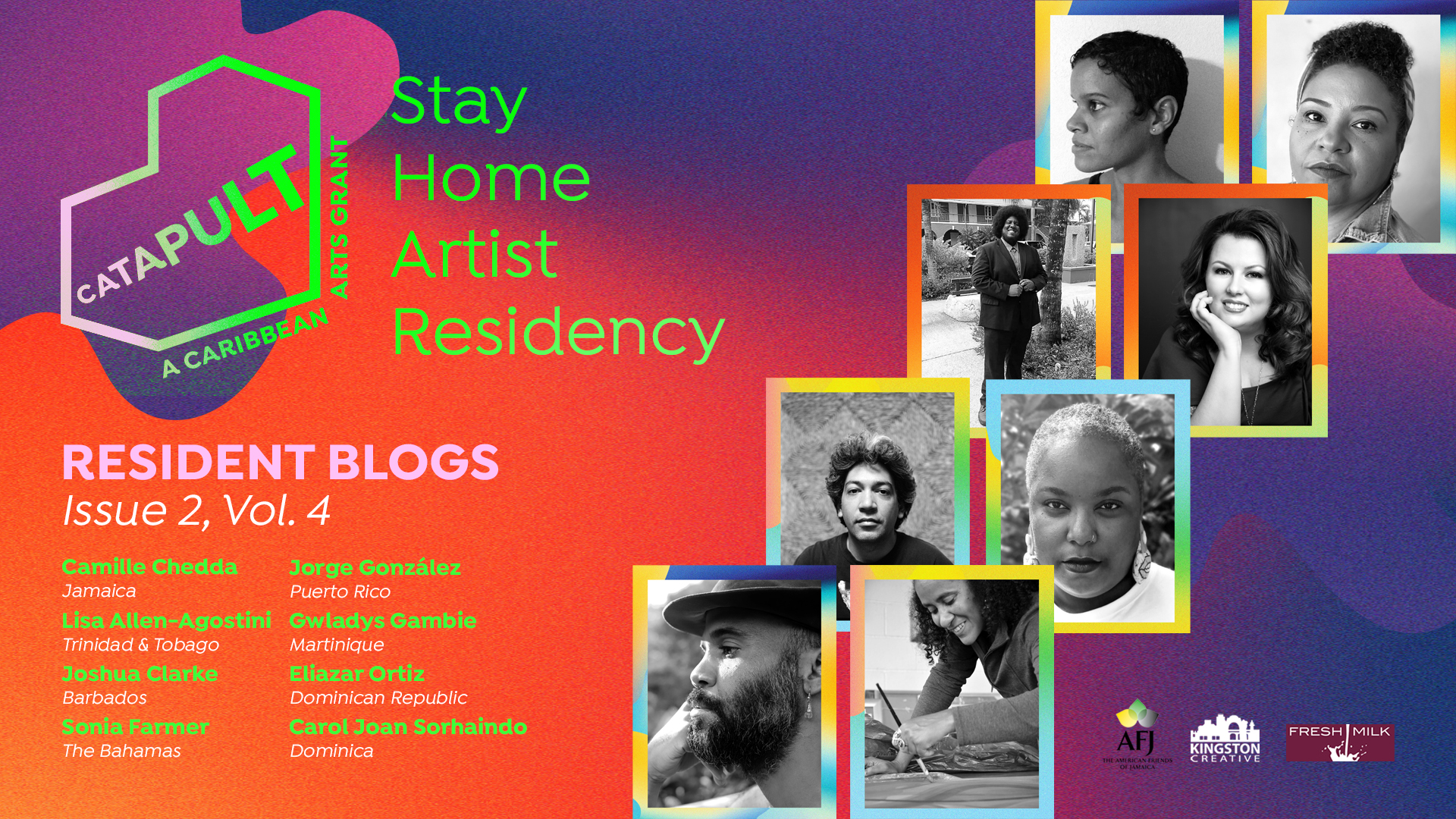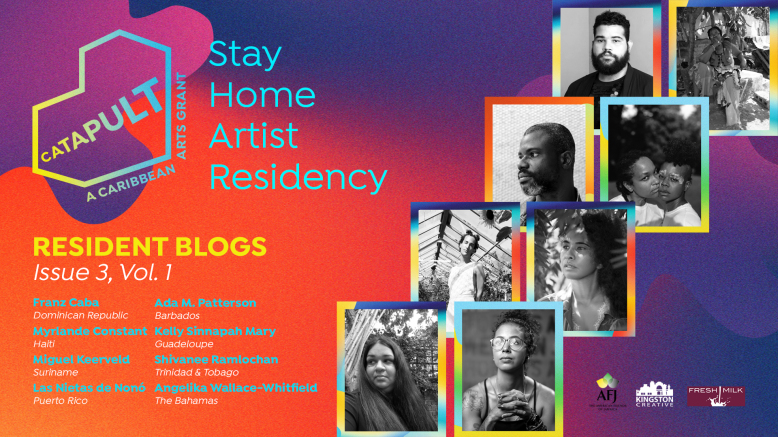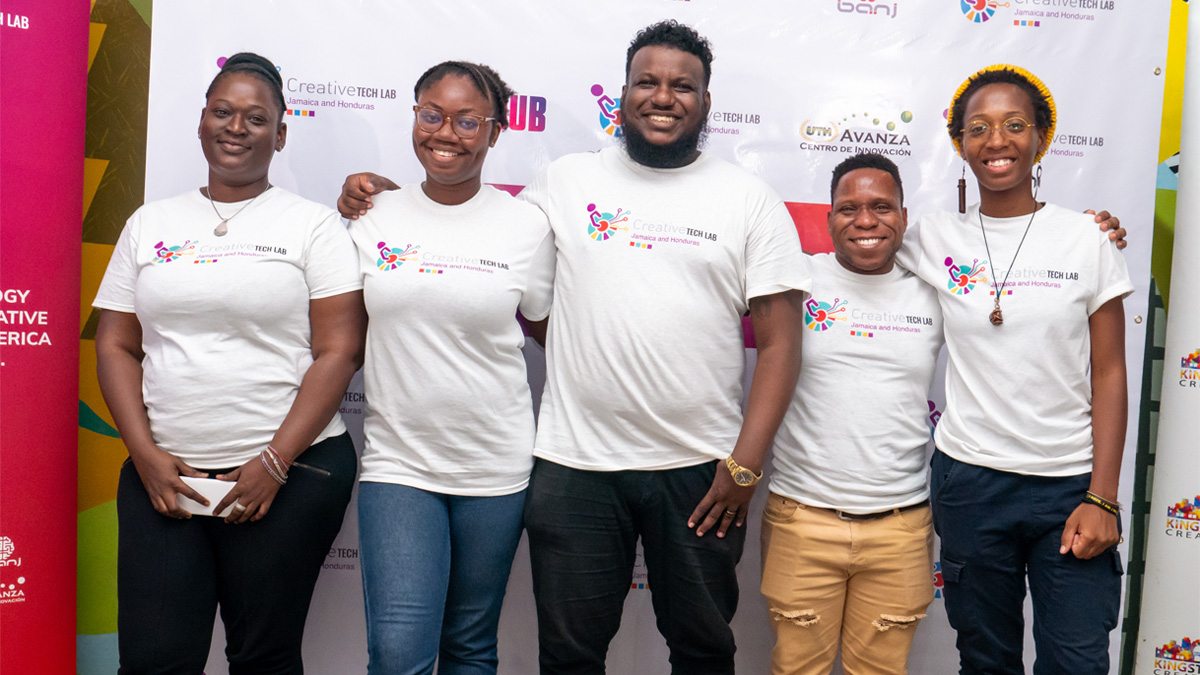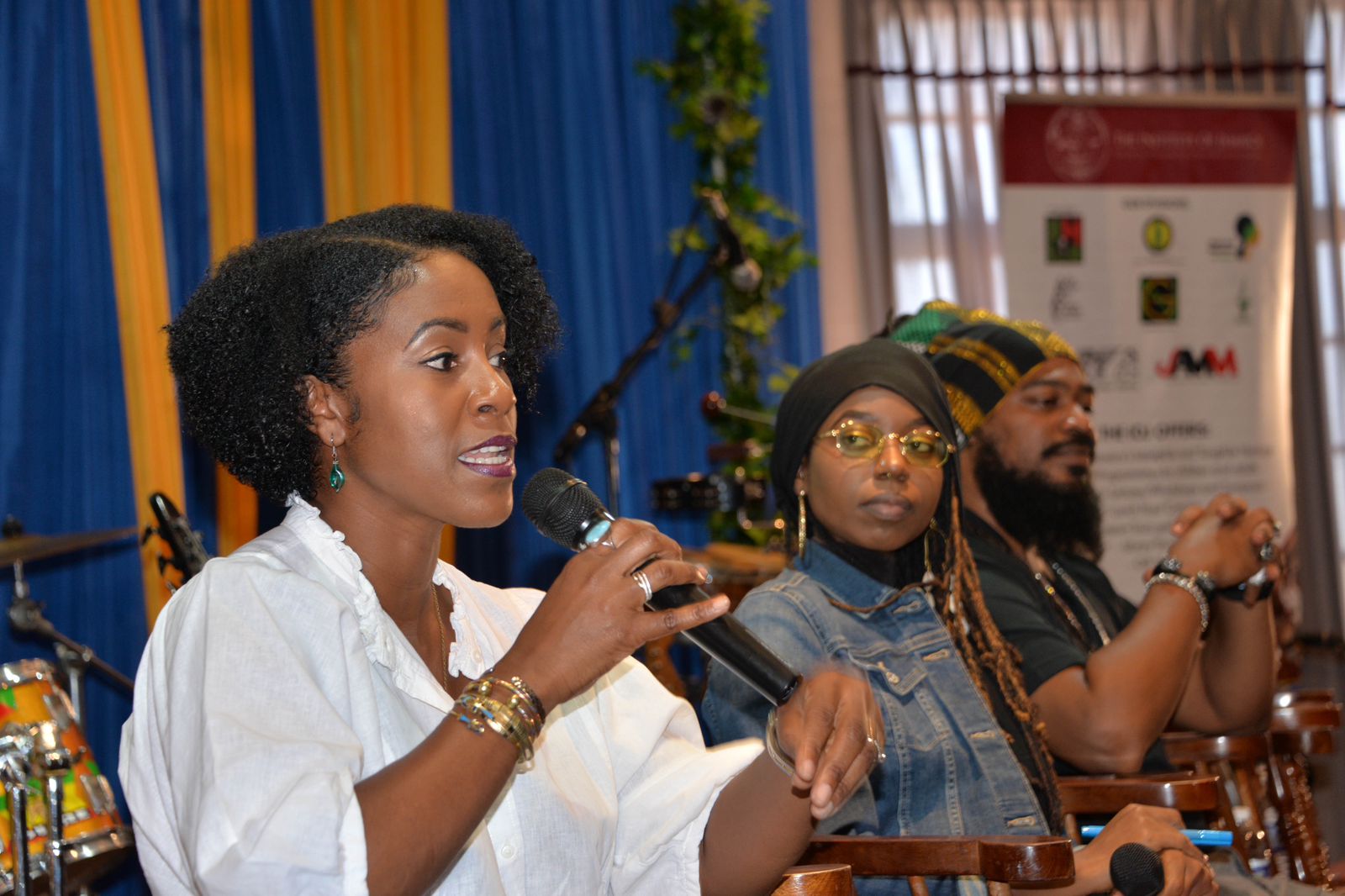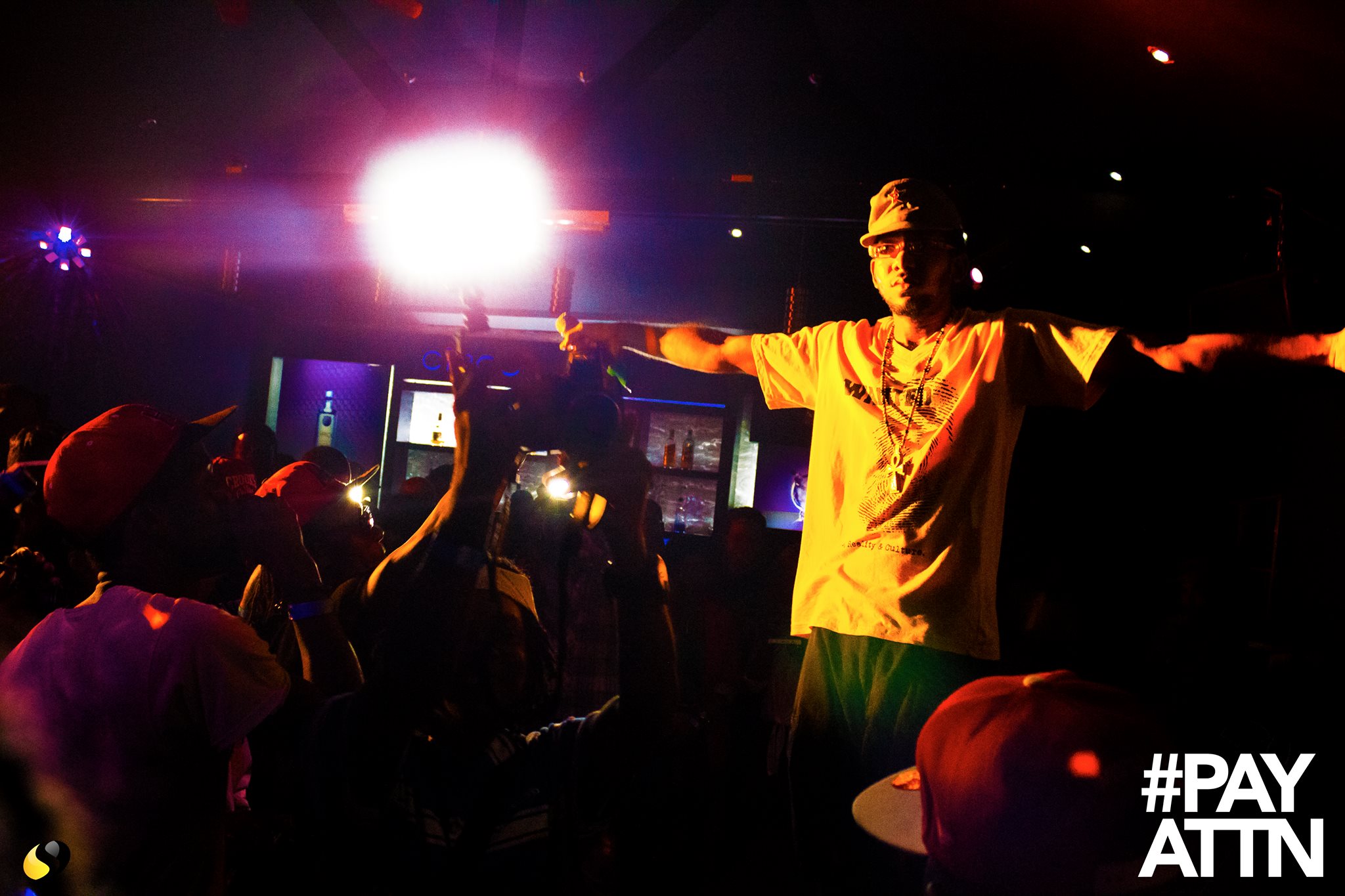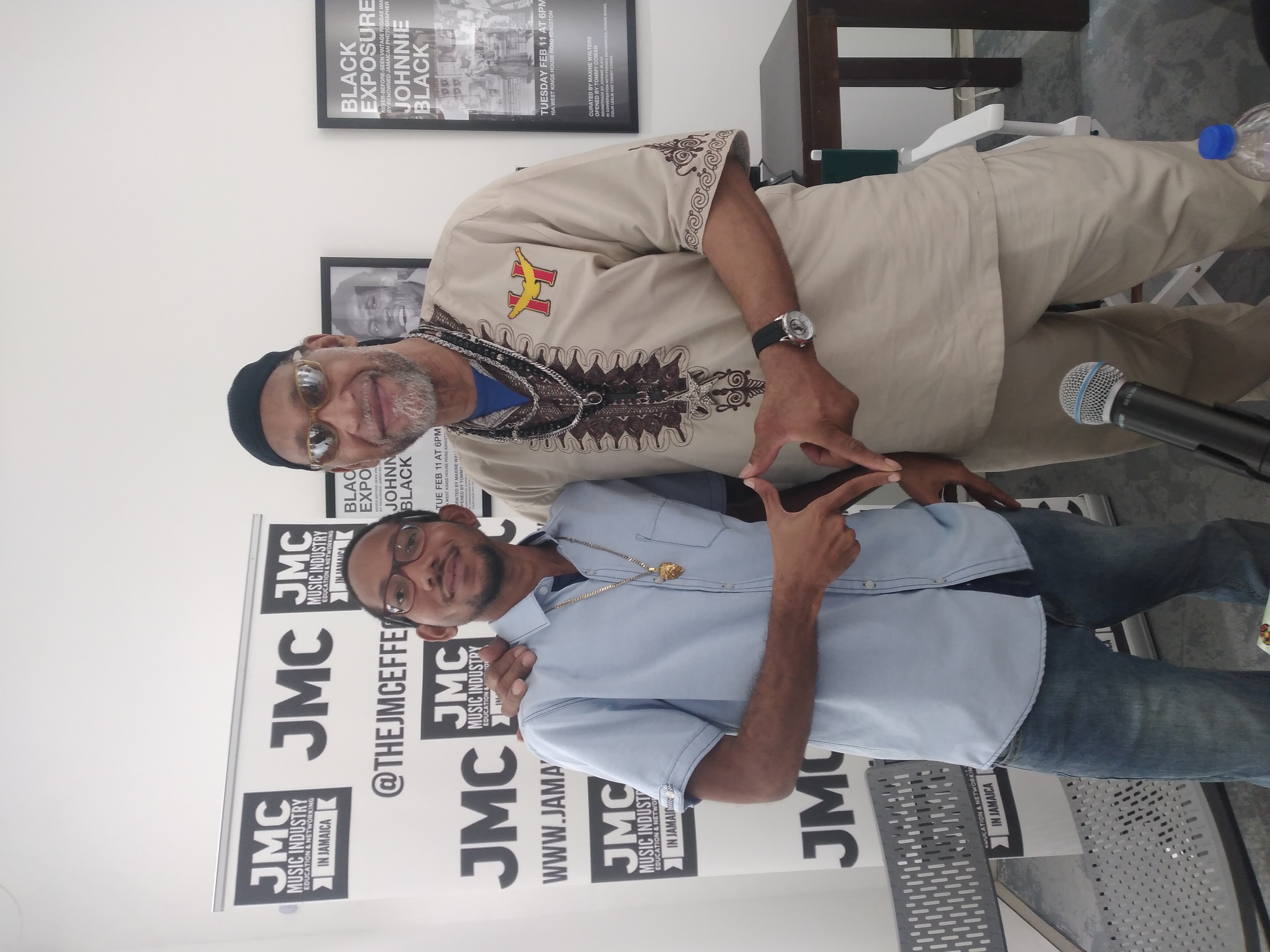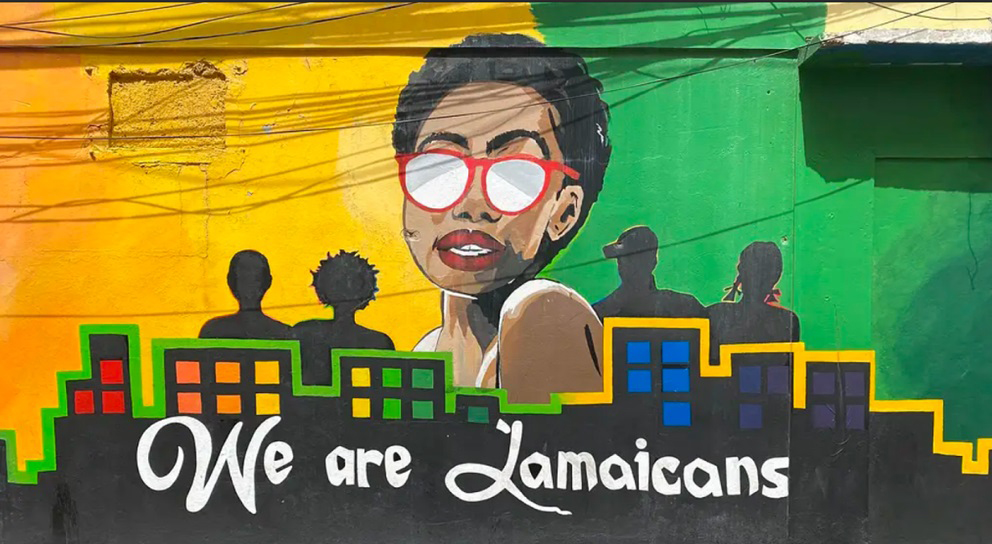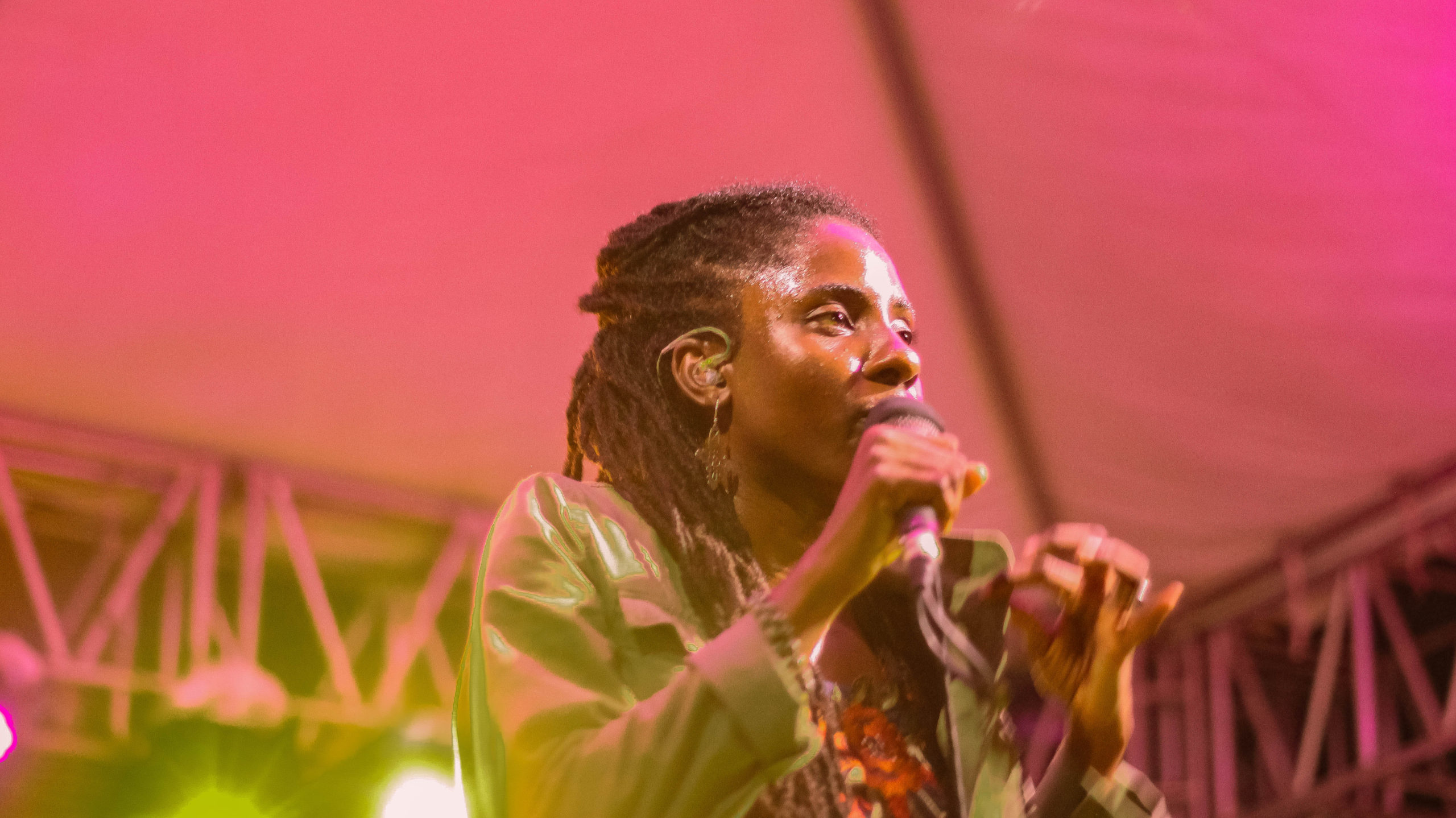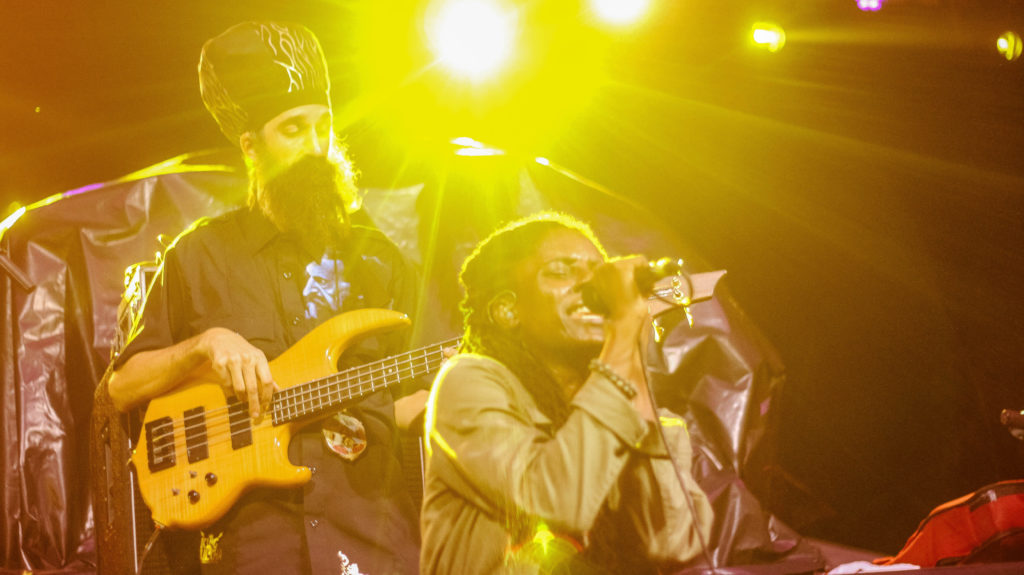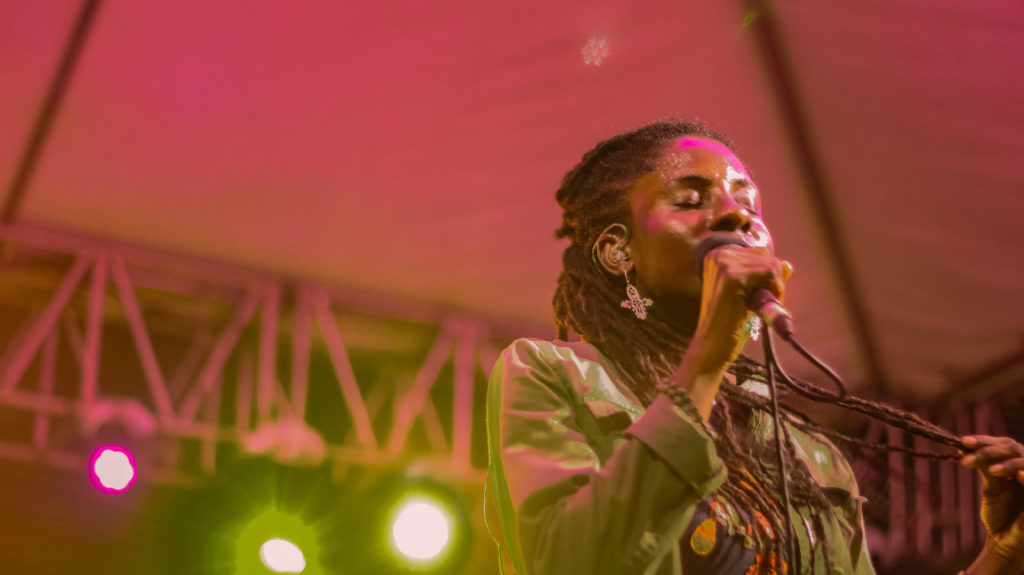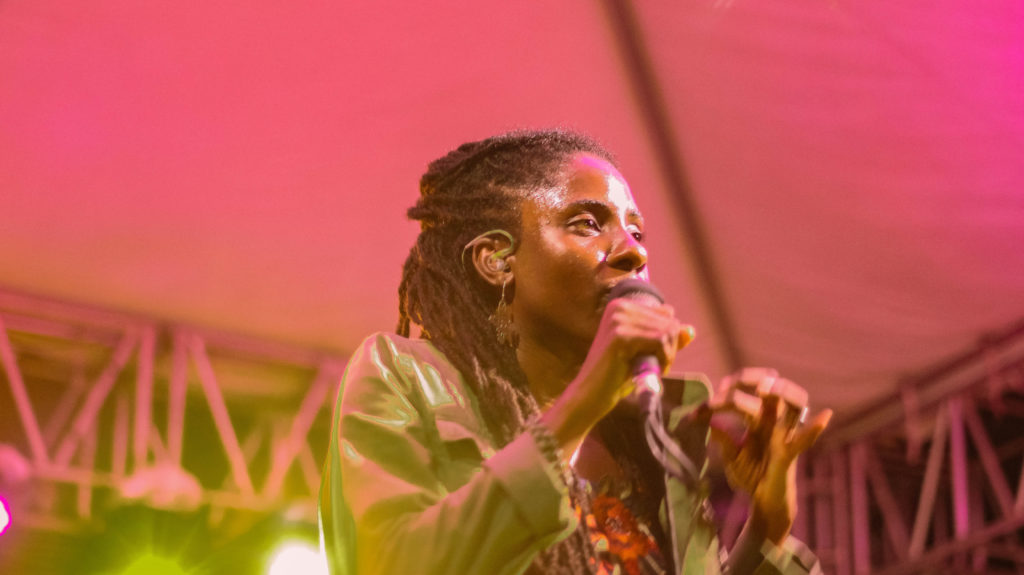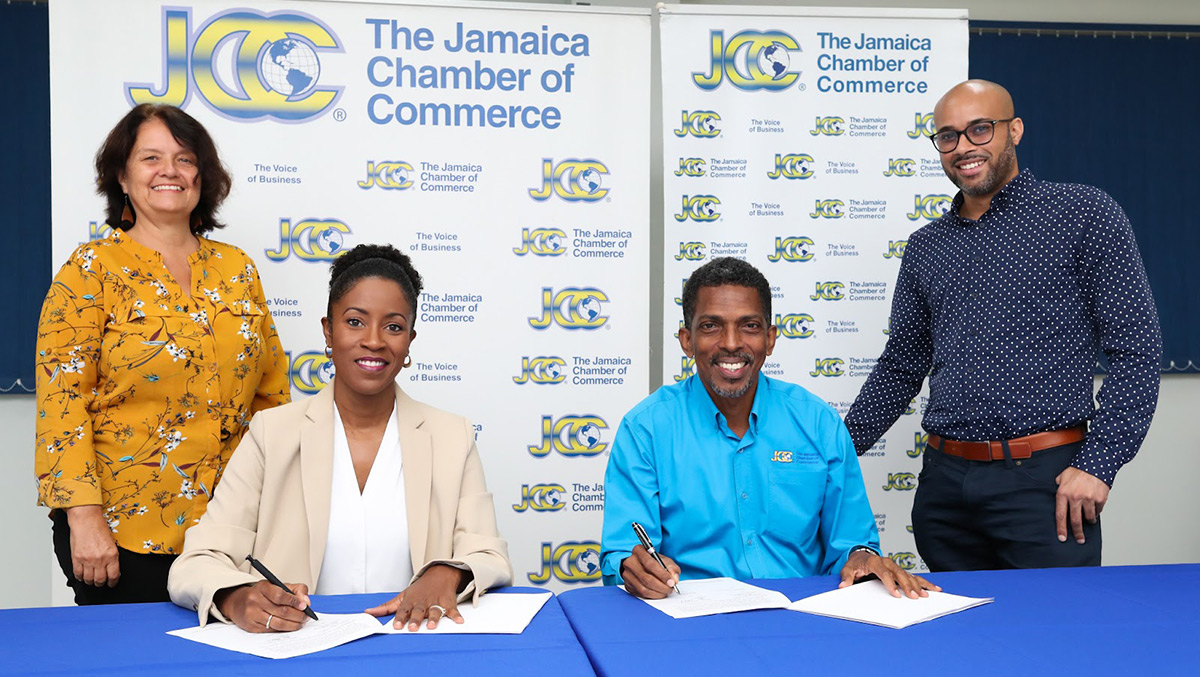Category: Blog_Post
All blog posts
Covid-19 kicked me out my comfort zone…#CovidEffects
Covid-19 kicked me out my comfort zone
For years, I have been delving in the visual arts as a photographer, exploring and now specializing in multiple genres in the art of photography. At no point in time have I ever considered venturing into the world videography. While my camera is quite capable of recording video, I have never felt the urge or the need to explore the video features of the device.
Earlier this year, I lost my eldest aunt. As Covid-19 cases started to rise here in Jamaica, the government taking the needed steps to try and curb the import and spread of the virus, took the decision to close our borders. This meant that family members overseas would not be able to attend the funeral. Coupled with the restrictions on public gatherings, friends and family here would also miss the funeral.
With just about 3 weeks to go before the funeral I got the idea that I should try and learn to record and edit videos so I would be able to record the funeral and provide an avenue for closure for those who would be unavoidably absent. I hit up YouTube University and started consuming content around videography. Learning what shutter speeds I needed to record at, matching shutter speed with the particular frame rate per second of the final video, ensuring that I stuck to native ISOs. I even learned specific video features related to the camera I use and how to manually control audio levels to ensure consistent audio quality. Being informed that for good audio quality, the camera’s built-in microphone wasn’t going to cut it, my friend Christopher over at Learn Share Photo Video recommended a budget microphone, the TAKSTAR SGC-598. I quickly jumped over to Amazon and placed the order and I managed to get it a week before the funeral.
Time to test if I’ve learned anything
Armed with the knowledge I gathered in the short time and the new tool, I used the days of the grave digging to get my practice in for the main event. Things were making sense and just as I would execute on a photographic session, I adjusted to changing scenes and lighting conditions. I did encounter the challenge of keeping the camera perfectly level and avoiding jerky movements while operating the camera handheld, as well as manually racking focus on subjects, but I did my best to compensate.
On the day of the funeral, mentally I had a workflow down and ready to try and execute as best as I could considering my beginner status. However the day was not without newbie mistakes. Firstly, I ended up leaving the house without my tripod so I had to record the entire funeral hand-held. I think I gained some muscle at the end of the day, trying to hold the camera steady enough to simulate being on a tripod. My second newbie hiccup occurred close to the end where I missed a few minutes of footage. My camera has a time limit on a single recording of 20 minutes. On one instance the 20 minutes ran out and I was there in the motion recording and not realizing that recording had actually stopped *facepalm*. Luckily it wasn’t a critical moment or else I’d be so upset at myself.
Putting the piece all together
Now that I had the footage, it was time to learn how to piece it all together and make a final production. What software did I choose to edit the videos you might ask? I decided to try out version 16 of the non-linear editor (NLE) DaVinci Resolve. From what I gathered at the time it was the industry standard for cinematic color grading of video footage. Without getting too techie with it, as that’s a part of my other life, it’s a feature packed application offered by BlackMagic Design FREE of charge and rivals the likes of Adobe’s Premiere Pro and Apple’s Final Cut Pro. There are a few advanced features excluded from the free version that hardcore video editors would need. These are offered in the paid version of the product, DaVinci Resolve Studio.

DaVinci Resolve Splash Screen
I began learning how to review and cut footage, lining them up on a timeline, adding transitions between each cut and adding and syncing videos using their audio signatures. Producing video is really a time consuming task. While I can do a 1 hour shoot and cull through the session images and pick out the best ones that I will end up retouching in just a few minutes, it’s not the same with video. If you record 1 hour worth of video you will have to watch that 1 hour footage to determine what needs to be kept. Just imagine a full production. Imagine a wedding videographer or cinematographer who has covered a full wedding from getting ready to reception. That’s at least 8 hours of footage that they would need to review and post-produce. Whew! I had about 3 hours of footage that I had to review to make my final video.

DaVinci Resolve Edit Screen
All in all, it was a good experience and another level of growth for me. I have already enrolled in a course on lynda.com to get a better handle on DaVinci Resolve so I can become more proficient in using the application.
Did Covid-19 kick you out of your comfort zone too? What new thing(s) did you learn
Source: DWAYNE K. SMITH PHOTOGRAPHY
Author: Dwayne K. Smith
Dwayne is a multi-genre photographer who lives and exercises his craft in the beautiful island of Jamaica. His approach of being an explorer of the various photographic arts helps to mold his personal style.
See more of Dwayne’s work in Portraiture, Events, Nature, Landscapes, Weddings, Astroscapes, Timelapses, Food Automobile Real Estates and Interiors by visiting Dwayne’s website to see more of his pictures : https://bit.ly/3zqEeuF
Blog Originally posted here: https://bit.ly/3ywJlIQ
DWAYNE K. SMITH PHOTOGRAPHY
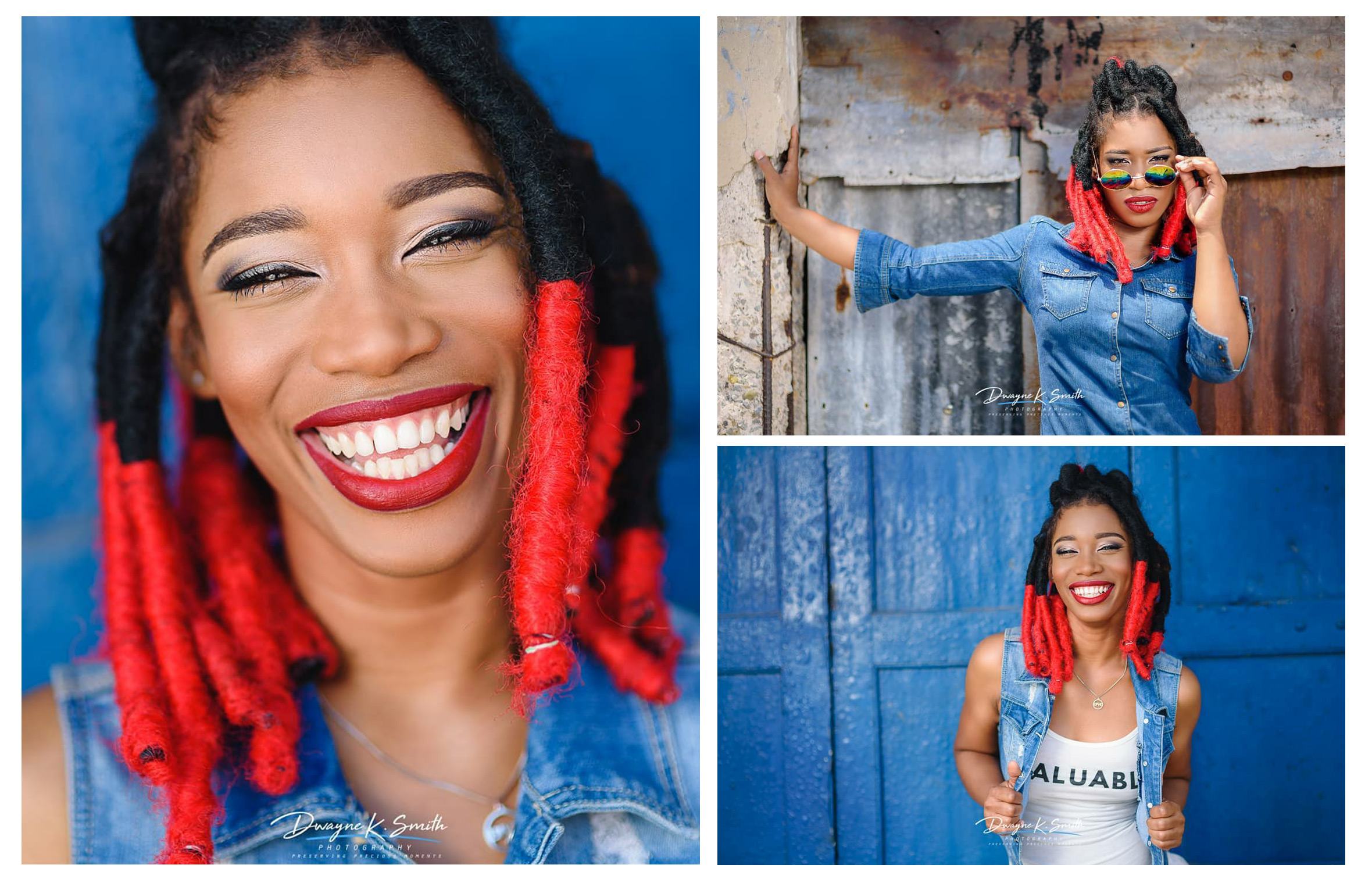
Creative Tech Lab 2.0 Births Innovative Business Ideas from Jamaica
Creative Tech Lab 2.0 Births Innovative Business Ideas from Jamaica
The Creative Technology Lab (CTL) 2023, an innovative initiative uniting creative minds and tech enthusiasts, has concluded its journey, marking the culmination of weeks filled with collaborative energy, hard work and creativity. Spanning across Jamaica and Honduras, and funded by the Inter American Development Bank (IDB), this event was a testament to the extraordinary potential of combining creativity and technology in the region and how nations can collaborate beyond the boundaries of borders and language.
Participants in Jamaica worked with the Kingston Creative team and in Honduras with the team at the Universidad Tecnologica de Honduras, while the overall programme was guided by Banj, a Haiti-based Tech Hub. Throughout the journey, the participants embarked on an enriching experience, delving deep into intensive learning sessions, gaining invaluable expertise, and engaging with regional industry experts. This immersive exploration not only honed their skills but also developed new business ideas.
The event closed with a Pitch Day hosted by the Kingston Creative Hub in Downtown Kingston. The participants unveiled their visionary projects before a panel of investors, industry experts and 500 online viewers on Facebook Live.
A distinctive feature of CTL 2023 was its hybrid approach, utilising cutting-edge technology to transcend geographical barriers between Jamaica, Haiti and Honduras. Through virtual collaboration tools and live streaming, participants and audiences were seamlessly linked, fostering collaboration and innovation despite the physical distance.
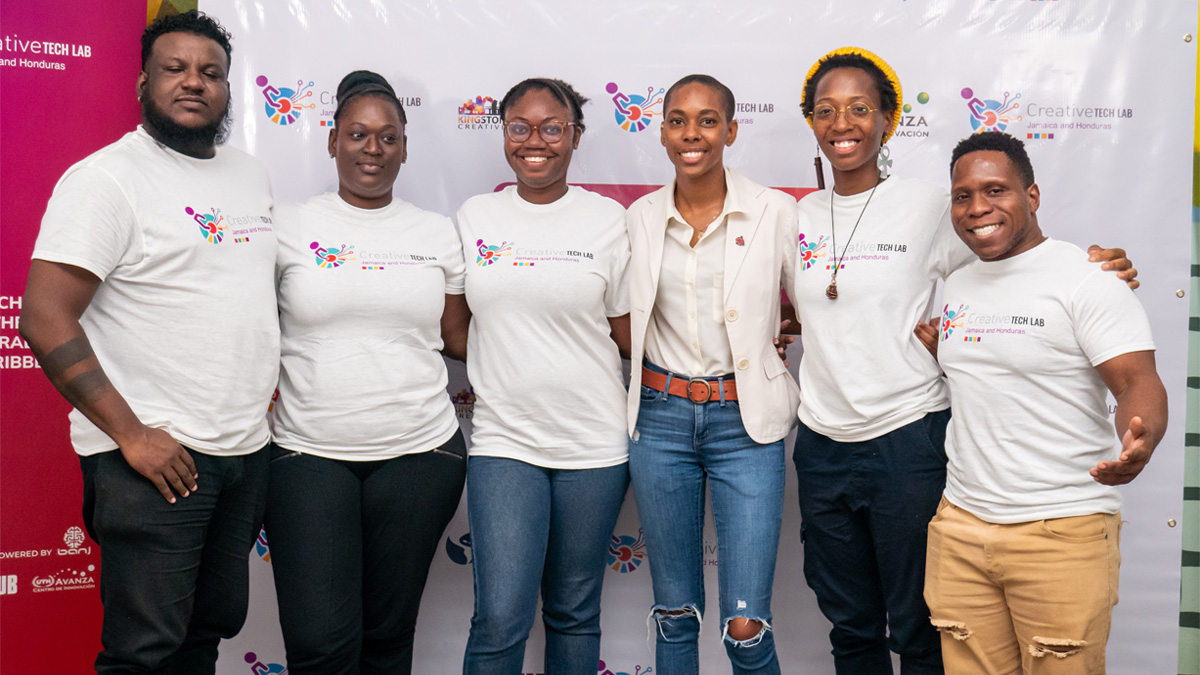
Two standout projects emerged from this talented cohort from Jamaica:
Eventide™: This cutting-edge software revolutionises event graphic design and marketing. Eventide™ offers intelligent templates, AI-driven design insights, cost estimation, collaboration tools, automated marketing, and performance analytics. By streamlining design processes, Eventide™ not only saves time and enhances creativity but also maximises budget efficiency, transforming event planning and marketing strategies.
Innersight: A Web Portal meticulously gathering qualitative text and voice data for creative arts program testimonials. Powered by transcriptors, this data fuels a dashboard showcasing social impact metrics. Innersight’s vision bridges the gap between creativity and social impact, providing a holistic view of the transformative power of the arts.
The conclusion of CTL 2023 marks not just the end of a regional hackathon event but the emergence of promising business ventures which can be incubated through Kingston Creatives Incubator, Accelerator, Best Pitch Forward, Business Registration and other programmes designed to empower creative entrepreneurs and drive growth in the Cultural and Creative Industries. Hackathons are essential features of the ecosystem, nurturing future innovators and fostering a culture of collaboration in the creative economies of Central America and the Caribbean. All the participants have received an exclusive invitation to use business services at the Hub and join the Kingston Creative Incubator Programme, which will further guide their projects and entrepreneurial pursuits.
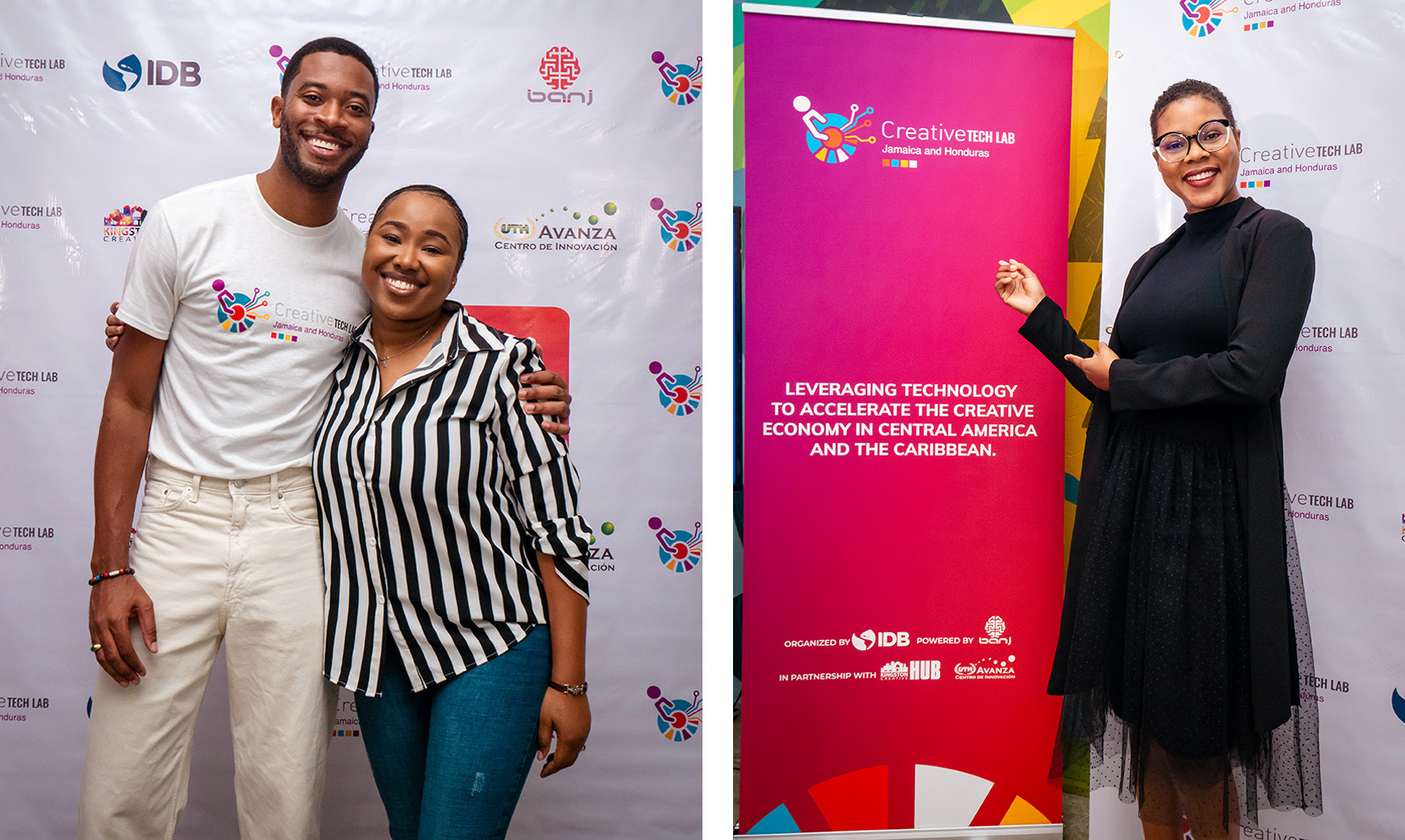
Culture as Resistance: Reflections on Seven Years of Kingston Creative
Reclaiming physical space is resistance. Challenging the status quo is resistance. Defining Arts and Culture as a driver of social and economic transformation is resistance. Putting artists and cultural workers in a position of prominence and status in our society is resistance. Intentionally betting on what is most powerful about us as a country – OUR CULTURE – even though it arguably is created by who we consider to be from the working classes of society – is resistance. Deciding to change our city, our economy and empower our most culturally vibrant communities – is resistance. Imagining a new future together, and taking action together from the ground up, not the top down to realize this new future – this is an act of resistance.
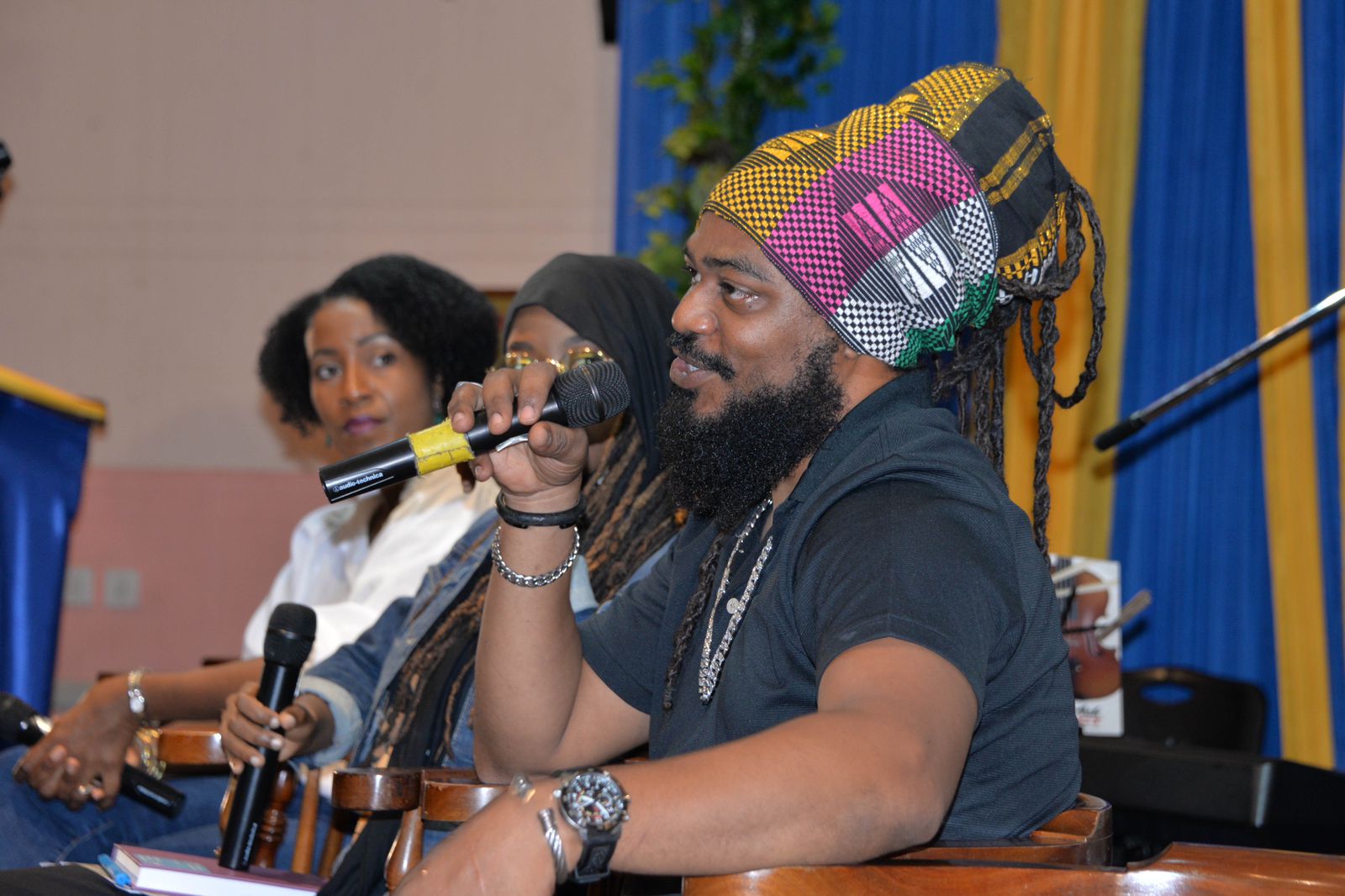
If you ask me on any given day whether I’m “into” politics, I, like many creatives, would say that I am not political. Our politics is framed in a limiting way, as it forces us to think about development in choppy 4-year cycles instead of the 25- and 50-year strategic cycles that lead to real transformation and sustainable national development. To be creative, one must be in a certain state of mind and often I find that it is necessary to block out the partisan chatter that we all too often find ourselves embroiled in as a society.
But “politics”, from the Greek word “politika”, is defined simply as “affairs of the cities”. In a very literal sense, politics is just the set of activities associated with making decisions in groups and managing the power relations among individuals. The Irish political scientist Michael Laver, put it this way:
“Politics is about the characteristic blend of conflict and co-operation that can be found so often in human interactions. Pure conflict is war. Pure co-operation is true love. Politics is a mixture of both. “
If I were to abide by the true definition of politics, then the work that we at Kingston Creative are engaged in is very political. Artists and creatives are actively changing the affairs of the city with every mural, every film, every book and every cultural tour.
Kingston Creative is a movement that came into being 7 years ago almost to the day, so let me say first Happy 7th Anniversary to the entire Kingston Creative family. I vividly remember being upstairs in the attic in my home in London, making that call to my cofounder Allan Daisley who was in Miami. My hand was shaking, and I was absolutely full of trepidation. This vision was so big, and I just didn’t want to sound unhinged. I didn’t even want to speak it out loud, but it was so urgent that I felt that I would burst if I didn’t.
Even as a possibility thinker and an eternal optimist, I know how the world works. I am a dark-skinned black person, I am a woman, one with an unremarkable last name at that and no generational wealth to fund a massive vision, so who were we to think that we could really shift the affairs of the city?
But we stepped out in faith and developed our 10-year plan with David Mullings and Jennifer Bailey. I moved back home to Jamaica, and we took a small another step forward, first presenting the concept at UWI’s Imagine Kingston conference in 2017. We formed a core team with Doris Gross and Dr. Kim Marie Spence. Very rapidly, a group of 100 volunteers and creatives came on board, who all played a critical role in hosting Artwalk festivals and monthly meetups, painting murals and driving this vision forward.
We registered a nonprofit company in 2019, then a charity organization, and were able to raise money to fund operations. This would not have happened without the support of who we term the First 50 Founders, individuals and companies that donate one million a year because they want to be a part of the transformation of Downtown and the economic growth that they believe creative entrepreneurs and the Orange Economy can deliver.
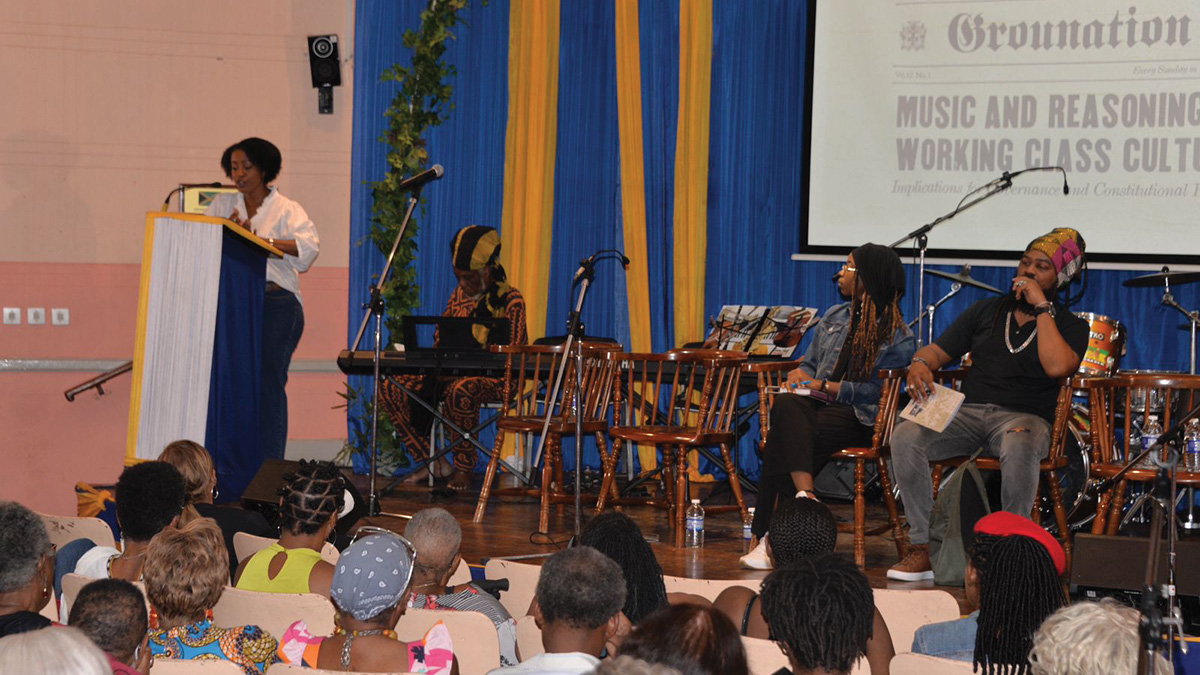
Since 2017, we have painted 101 murals, opened a Downtown coworking space, launched the Artwalk -a monthly public arts festival and created a cultural tourism destination in Water Lane that is now listed on Tripadvisor. This street art pathway connects the Institute of Jamaica museums on East Street with the National Gallery of Jamaica on Orange Street, and the talent of these artists has brought many visitors into this part of the city. Our main partners in these developments are the Tourism Enhancement Fund (TEF), Sherwin Williams, the KSAMC, the Development Bank of Jamaica (DBJ), the CB Facey Foundation, and the Kingston Restoration Company (KRC), but it is important to note that none of this would have started without the time and money contributed by ordinary Jamaicans, both here and in the Diaspora.
Ours is a vision of “people and place” and with partners including IDB Lab, DBJ, PIOJ, JAMPRO, HEART and Sagicor we invest heavily in developing creative people. We have delivered over 5,500 free training opportunities, enabled 9 artists to go overseas on travel grants, developed an ecommerce platform called Kulcha Connect, developed an online directory of creatives called Caribbean Creative Network where the world can now find over 409 creatives – and hire them. We have hosted four editions of Best Pitch forward, the first pitch competition exclusively for Jamaican creatives where $2.2 million in seed capital has been granted to creative entrepreneurs.
Formalization is critical to the development of the ecosystem, and Kingston Creative, with the support of IDB, JIPO and Companies Office of Jamaica, has helped 104 creative entrepreneurs to register their businesses and intellectual property. We conceptualized a regional programme called CATAPULT (www.catapultsarts.org) which gave support and grants of $73 million JMD to 1,535 creatives from 27 Caribbean countries during the COVID-19 years, when artists around the region were at their most vulnerable. This we accomplished with a tiny 4 person team and by partnering with Open Societies Foundation, American Friends of Jamaica and Barbados-based nonprofit, Fresh Milk.
We have engaged with 20 Downtown Communities and 8 Downtown Kingston community tourism locations have been supported by the tours that we offer. Most of all, we have made a small dent in shifting the public perception of Downtown Kingston, along with our media partners the Jamaica Gleaner and the Jamaica Observer – both of whom are fully committed to turning around the old city and reducing the stigma.
If there are any secrets to our success, the first is, without question, people. We have a committed, talented team, an amazing Board, and many advisors and truth tellers that keep us on the right track. We also have visionary partners and advocates within the private and public sector and multilateral sphere, not least of all the Ministry of Culture and its agencies like the Institute of Jamaica and the Jamaica Music Museum – we are thankful for all the great people that work there.
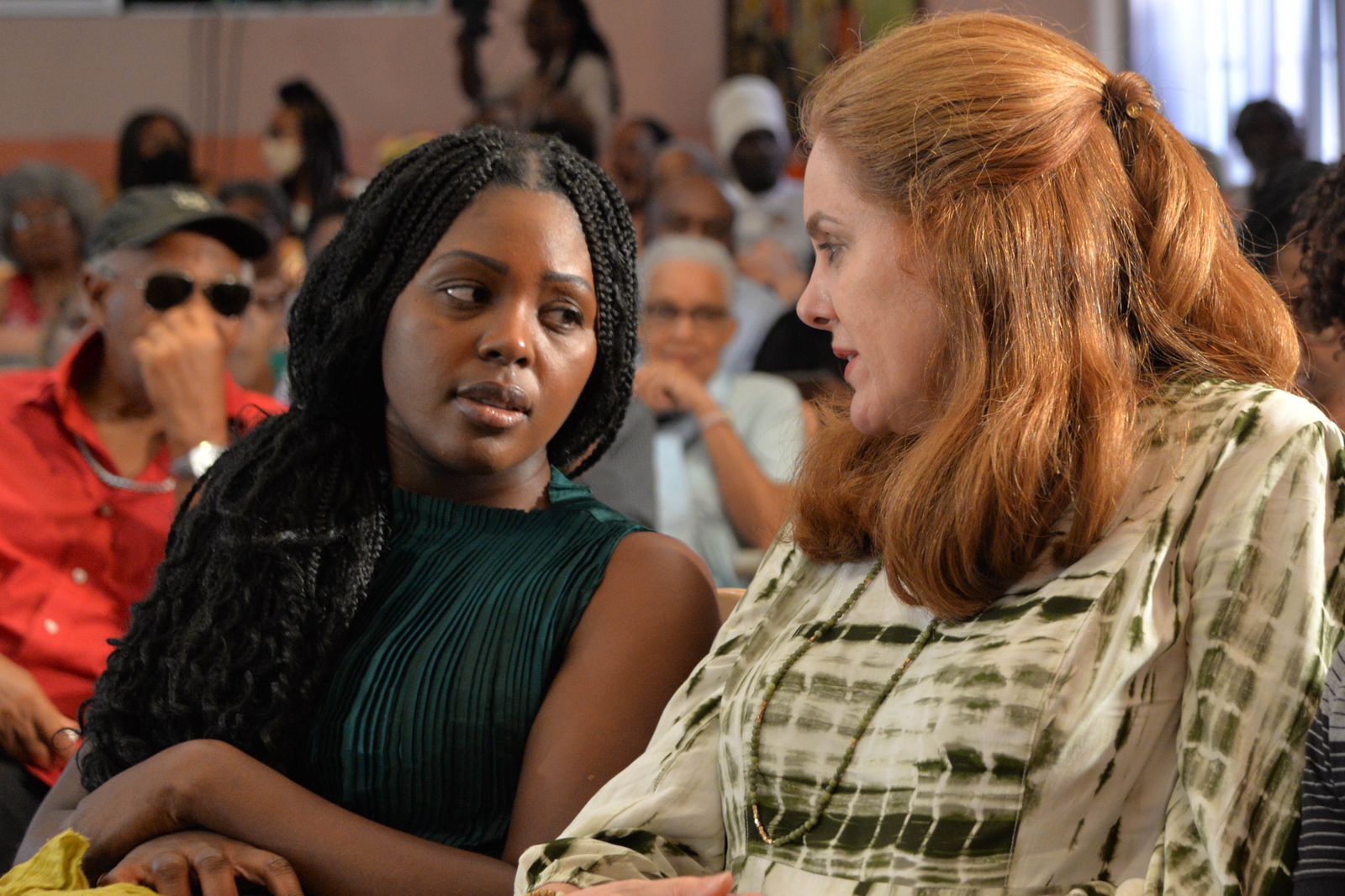
Our second secret is imagination. We give ourselves the room to imagine a positive, creative future for Jamaica. We balance that big imagination with practicality and persistence.
Our third secret is small consistent action. The movement is not known for flashy pronouncements and massive projects, but we come together to take tiny actions, sometimes imperceptible baby steps to get us closer to that future that we imagined. We stay centred by never forgetting our mission of empowering creative people, so that they can succeed, gain access to global markets, and create wealth for themselves and their communities. We hold as a beacon to inspire us, our vision of Kingston as the Creative Capital of the Caribbean. We always know who we serve – a community of creatives and the beautiful old city of Downtown Kingston.
Often, I am asked, where did all this come from? The story starts in Glasgow Scotland, where I was born to a Trinidadian mother and a Jamaican father in the era of Black power, surrounded by Caribbean people and some legendary parties where the music of Bob Marley played late into the night. I lived with my grandparents there in the 80’s, who took me to bookstores, where I spent hours just sitting on the carpet luxuriating in books which are still my first love, with visual arts, drawing and painting as a very close second. I grew up walking to school and roaming the streets freely in a safe city. We frequented the art galleries and museums, and it was normal to see free public art in theatres, public spaces, parks and gardens, where friends played, families met and memories were made.
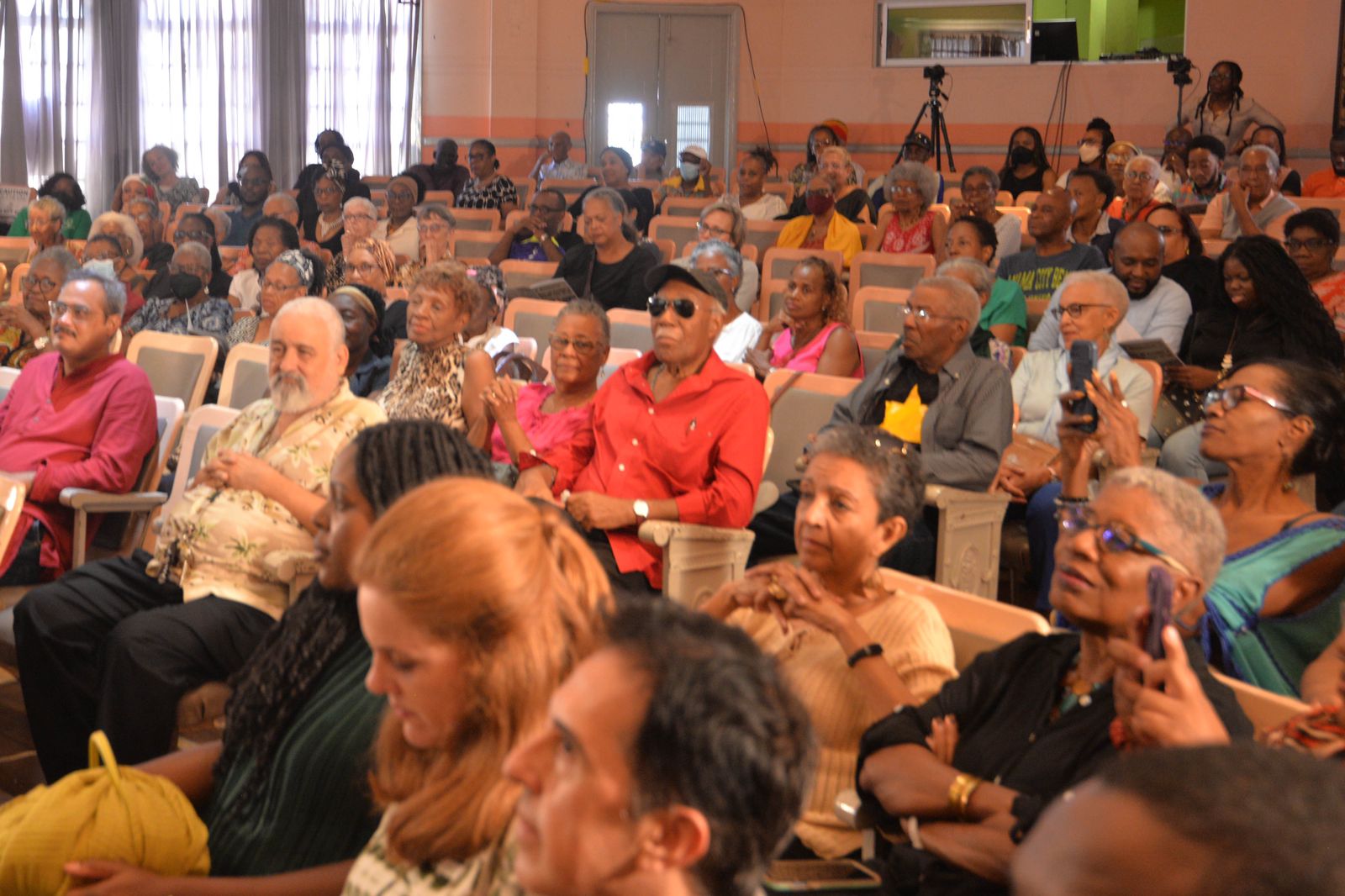
The second chapter of the story moves to the USA, where I became a licensed professional structural engineer working on multimillion dollar city redevelopment and historical preservation projects in Washington DC. I worked my early years in Miami, in the Design District, on 2nd Avenue, near Little Haiti, where now a famous Art District called Wynwood stands, and the change is incredible to have witnessed. There is also some valuable Jamaican public sector experience, the years when I was the Director of Technical Services in the Ministry of Water and Housing, responsible for over 90 joint-venture housing developments across the island and the squatter management programme, which took me into some very depressed communities in Montego Bay and of course Downtown Kingston. I have worked in private sector corporations like Gracekennedy and Digicel, both Downtown-based companies, where skills in strategy, projects and managing multimillion dollar USD budgets were honed. Finally, I am an entrepreneur coming from a long line of entrepreneurs starting with my Grandma in Falmouth (Big up to Miss Richie!) and I started Bookophilia in 2008, a bookstore and café on Hope Road where I started to really understand the needs of the creative community and where Kei Miller, Marlon James and Anthony Winkler read, and where a young Protoje, Jah 9 and Kabaka Pyramid would have all performed.
The idea for Kingston Creative came from these diverse experiences, and it is fueled by the collective passion that every other single person in the movement has for this cause. And now, in year 7, in abandoned spaces and the neglected back lanes of Downtown Kingston, we see a real Art District emerging. Upstairs in Swiss Stores, above the F&B Downtown restaurant, we have building a creative hub coworking space – a Home for creative entrepreneurs, where they can have the space, training, investment, funding, recognition and the respect that they need to succeed.
The approach of using Art for Social and Economic transformation is not unique. Street artists have changed neighbourhoods and governments have invested in the Orange Economy and cultural tourism and reaped the benefits before. Other cities have invested in building the infrastructure, supported placemaking projects and invested in revitalization. This is nothing new – but it is a proven strategy that works. If we can apply it here in Jamaica, it can have a number of critical benefits:
- It can uplift artists and artisans from inner city communities, not just in Downtown but in similar communities across the island.
- It can diversify our economy through growing the Cultural and Creative Industries like film, fashion, culinary arts, dance, literature, and music.
- It can make our tourism product more resilient – cultural tourism is a viable and lucrative addition to the offering of sun, sea and sand.
- It can instill new pride in the parts of ourselves and our capital city that we try to hide.
- It can employ young people, offering a viable alternative for them to gangs, violence and scamming.
Kingston Creative deals with issues of grassroots empowerment and use of public space, which is disruptive. It challenges colonial mindsets and notions of ownership and frankly speaking, these structures just aren’t challenged enough in our society. In the Arts, gatekeeping was the norm, where a select few can determine which artist is worthy of accolades and which might be permitted entry into elite gallery spaces, and which might earn. But when the gallery becomes the street, young unknown artists are selected through an open call, and then these young artists are hired, just on the basis of their work, not the validation of gatekeepers – and they are paid millions for their talent. This is resistance.
In closing I want you to close your eyes and imagine with me for a second. Imagine if we had a legal and governance framework that really facilitated the success of our creative people, and that promoted the status of the artists, and the growth of the Orange Economy. Imagine that we had a policy, plan and funding for the development of cultural spaces across the island, rules that ensured that our built heritage can’t be knocked down by private interests, and that we encouraged the transformation of privately held, under-utilized spaces into viable creative spaces.
Imagine further that it was a national priority to build fit for purpose creative spaces, theatres, museums, new galleries and state of the art festival spaces. Imagine millions of people coming to our island to appreciate reggae and other cultural offerings. What if we provided the necessary makerspaces, studios and creative spaces for both the production and consumption of the arts?
What if we advocated for the access that creatives need; access to visas, ease of movement and travel, and challenged the geo-restrictions, so that our artists had full access to the technology and digital tools that they need to compete globally.
What if creative careers and creative education was a year-round priority and that pesky “A” in STEAM was consistently present, and the school kids that are the dancers, actors, singers, songwriters, musicians and poets, didn’t feel like outcasts. Imagine if these talented kids knew that there was an ecosystem to ensure their success in Jamaica, just knew that they could… like anyone else… work hard at their craft, buy a house, educate their kids, have full retirement funds, health and life insurance and if god forbid, they did fall ill, that their family could deal with it in a dignified manner without handouts and charity.
Imagine or just a second, what would happen if our young artists, especially those from inner city communities, knew that they were valued and that there was a real place in society for them, that they didn’t have to migrate, and that we valued them and that as a country, we were strategically organized to promote their success.
I often ask myself, where would we be as a country if we really believed in ourselves and in our cultural supremacy (which is so obvious to the rest of the world) and not only believed, but followed through in a structured, practical way. Where would we be today, if instead of simply singing along to “One Love”, we embedded the necessary guiding principles, policies and legal frameworks for development of the Cultural and Creative Industries and real transformation for us as a nation.
Thank you for imagining with me. This small act of imagination and action – this is resistance.
Do You Really Know My Steez? The Journey of an Artist (and a Genre) in Jamaica – Five Steez
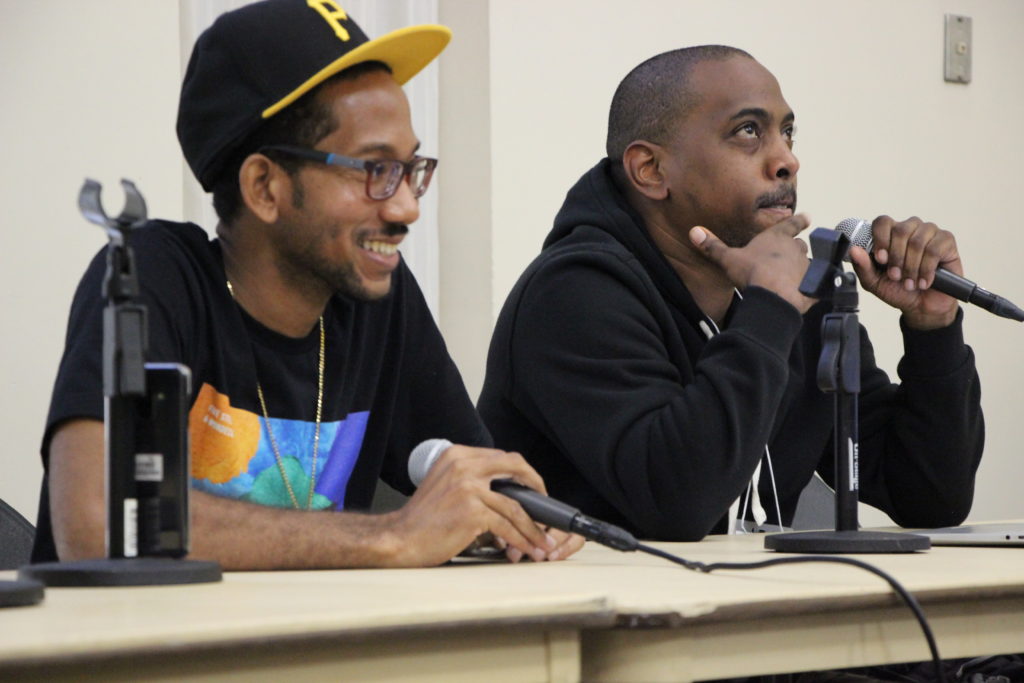
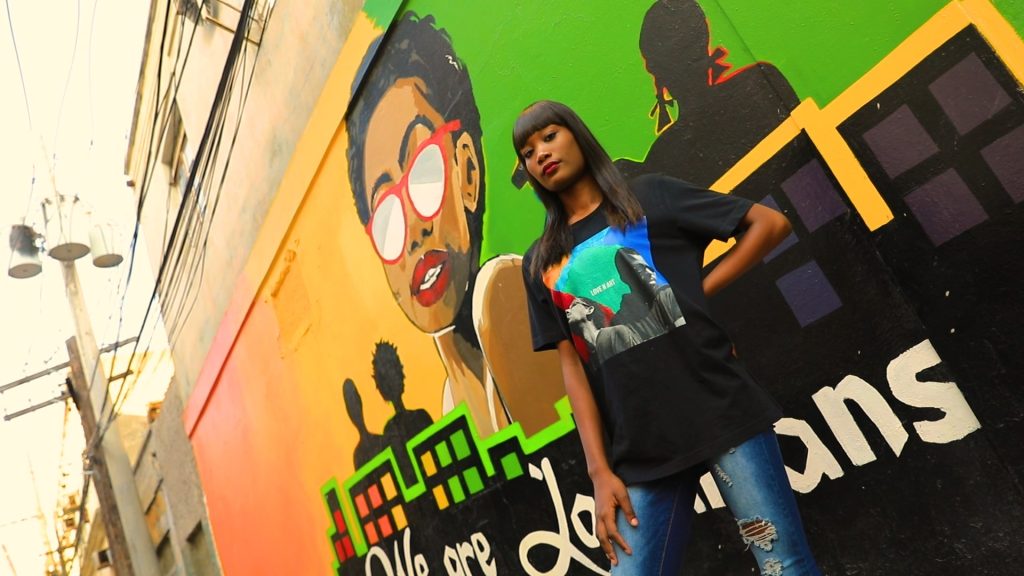
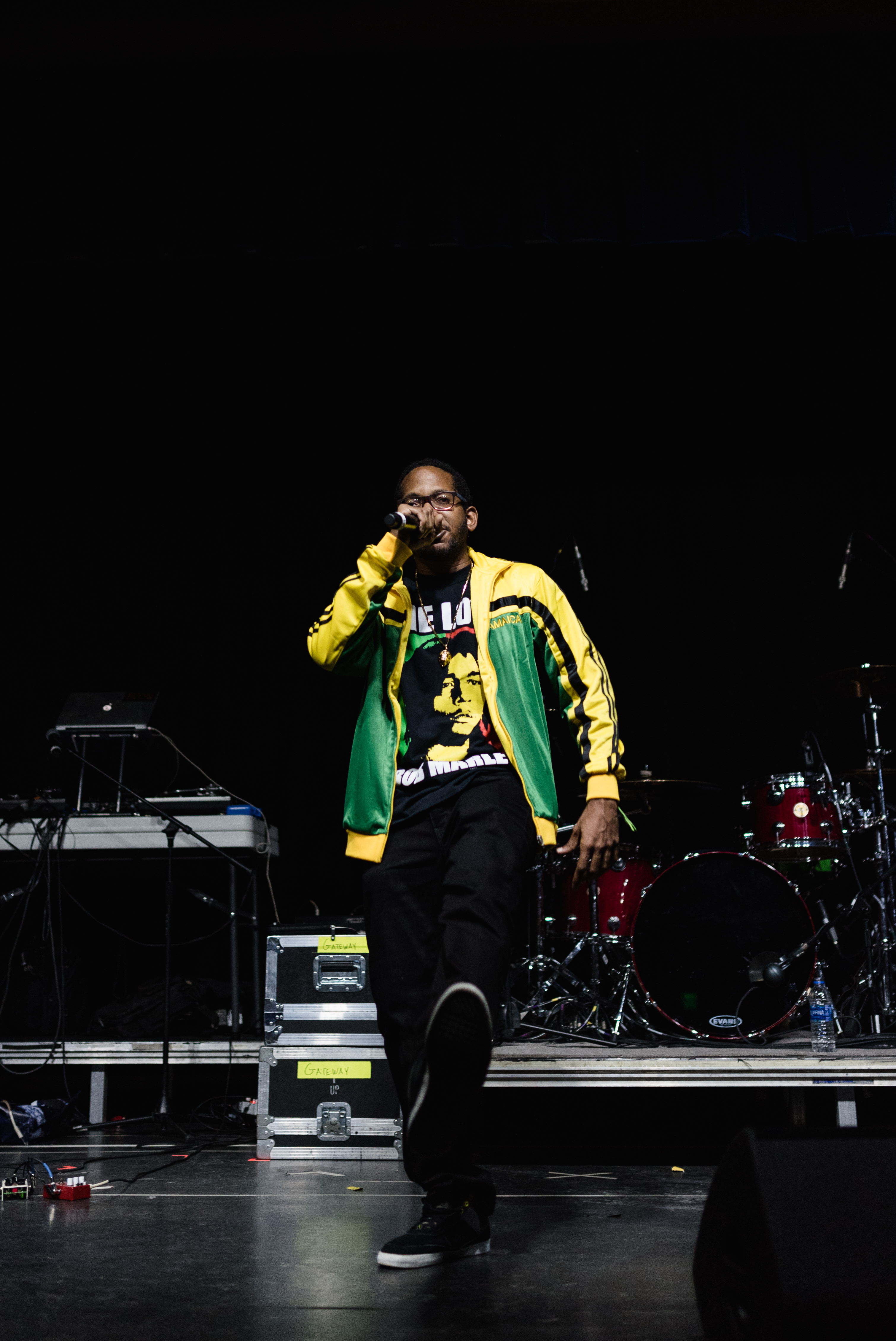
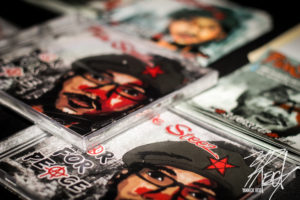 First Coast -The Jamaican and wider Caribbean involvement in Hip Hop
First Coast -The Jamaican and wider Caribbean involvement in Hip Hop
Island in Transition
The Journey from Reggae Music Mecca to Creative Economy Hub.
Jamaica has long been a cultural mecca, with over 4 million visitors per year coming to its shores to soak up the sun and experience the culture. This is the birthplace of Bob Marley, reggae music, and no less than five other major music genres, including dancehall, ska, rocksteady, dub, and mento. The creative talent isn’t just limited to music as Jamaica also has a creditable showing in dance, literature, film, visual arts, the culinary arts, and craft.
Poverty and crime, seen at its worst in the inner cities of Kingston, appears quite at odds with Jamaica’s cultural reputation. A common misconception is that Jamaica is doing well, having earned significant income from its reggae music industry. The reality, however, is that most of the economic activity (recording, publishing, distribution) that drives the Jamaican music industry is domiciled offshore.
Wikipedia’s list of international reggae festivals lists 136 events – all located outside of Jamaica. Jamaica does have two major reggae festivals, Sumfest and Rebel Salute, and by comparison, Italy has 16. While a few individual Jamaican artists may do well from touring overseas, most local creatives struggle to make a living. Over the years, the lion’s share of the earnings from Jamaica’s culture, accumulated in other countries, leaving Jamaica underdeveloped.
Globaleconomy.com reveals that Jamaica’s ranks second in the world for ‘human flight and brain drain’, out of 177 countries, achieving a rating of 9.5 out of 10 in 2023. As both the business and the audience are overseas, it is no surprise that artists of all types frequently migrate, contributing to the crippling brain drain experienced by the island and depleting the cultural sector of talent.
But all is not lost. Jamaica can still turn around its fortunes and it is betting on its cultural capital to take it there. Attention is being paid to developing creative entrepreneurs and aligning the policies needed to spur Creative Economy growth. Investments are being made to provide the funding and infrastructure that artists and creatives need to monetize their talent. The informality of the sector is also being challenged, as new programmes actively encourage creative entrepreneurs to register their businesses and their intellectual property, at no cost.
The recent developments augur well for the future of the cultural and creative industries; from a billion-dollar Film Fund to free creative training, creative coworking spaces, and a new Art District being developed in Downtown Kingston. The vibrant murals in Water Lane created by a young cadre of artists and animated by augmented reality, are spurring the rapid growth of cultural tourism in once desolate back streets.
Behind the scenes, this change is being driven from the bottom up, with a complex raft of multilateral, public, private and third sector partnerships as well as Jamaica’s extensive Diaspora lending support. It appears that the potential of the creative economy to deliver much needed growth is now being understood by the creatives themselves, as well as the policymakers. Concrete steps are being taken to ensure that the local ecosystem is improved, so that with the next wave of art and music emanating from Jamaica, the creators, artists and local communities hopefully will be the ones that benefit.
As a small island nation of only 2.8 million people, Jamaica’s musical and sporting icons have no business being global household names. The true power of Jamaican culture goes way beyond the entertainment value or even the possibility of culture delivering economic growth. Jamaica’s culture speaks to its people, its heritage, a turbulent history, a sense of fierce independence and social consciousness – powerful messages of “one love” that the world has embraced, and which Jamaica must do everything possible to preserve.
Author: Andrea Dempster Chung, March 2024
Photo Credits: Verrol Blake
Jah9 on finding fulfillment amid the fiasco – Gladstone Taylor
Correspondence from the Continent: Jah9 on finding fulfillment amid the fiasco
Music is never disembodied from Jamaican culture and lifestyle. Since the onset of what we know as Jamaican life, it has been used for things like education, passing coded messages, commentary, and sometimes informal reporting. After the country’s independence in 1962, when political structures were being erected, Jamaican music began to breathe it’s first breath. While political structures were naturally aligned to policies, philosophies, sometimes even religion, music as an art form, likely due to its extremely democratic nature, has always been about people politics. The great advantage of music, not that it can be properly compared to politics, is its fluidity. It became a way for the now independent citizens of Jamaica to say what they wanted, how they wanted it said(usually in their own language and without censorship), through the many elected minstrels that rose to calling. As with all industries, there are business facets that support the art form, allowing it to thrive. However, no matter how lucrative the industry becomes, most of the power in music still rests with the people. As much as people rely on music and art, musicians or creators rely on people a lot more.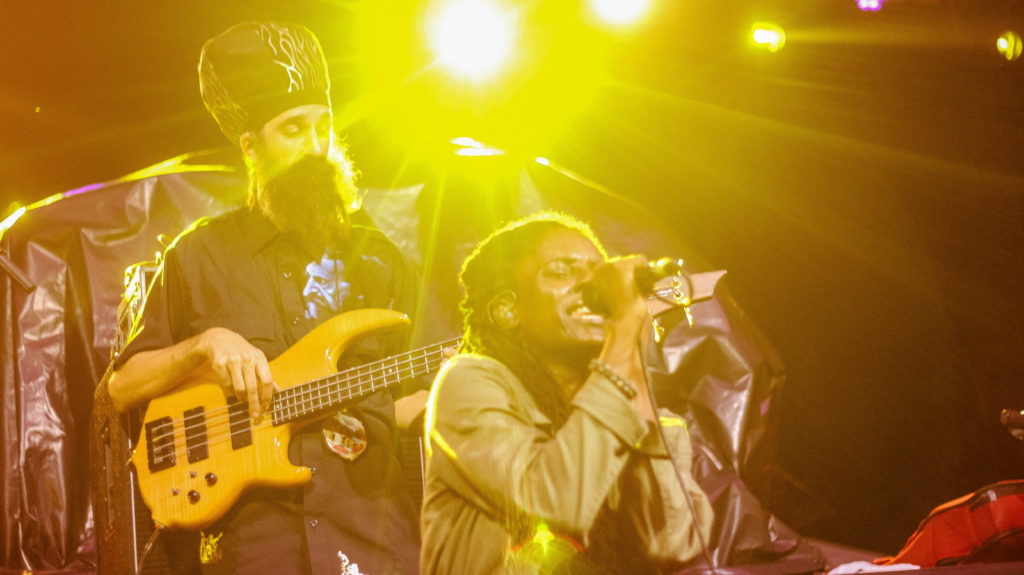
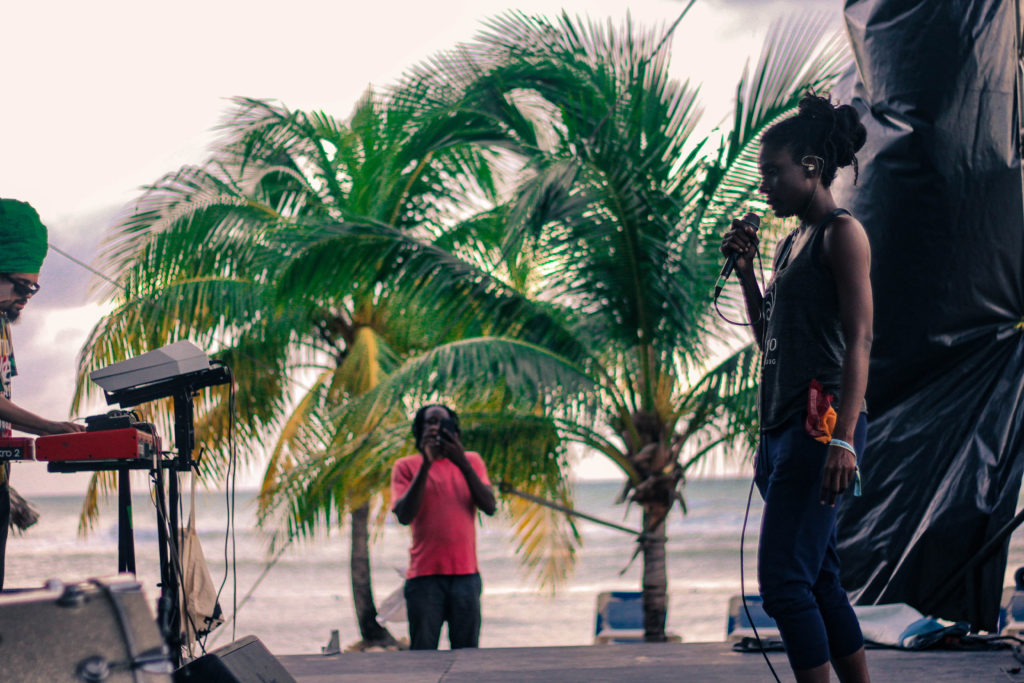
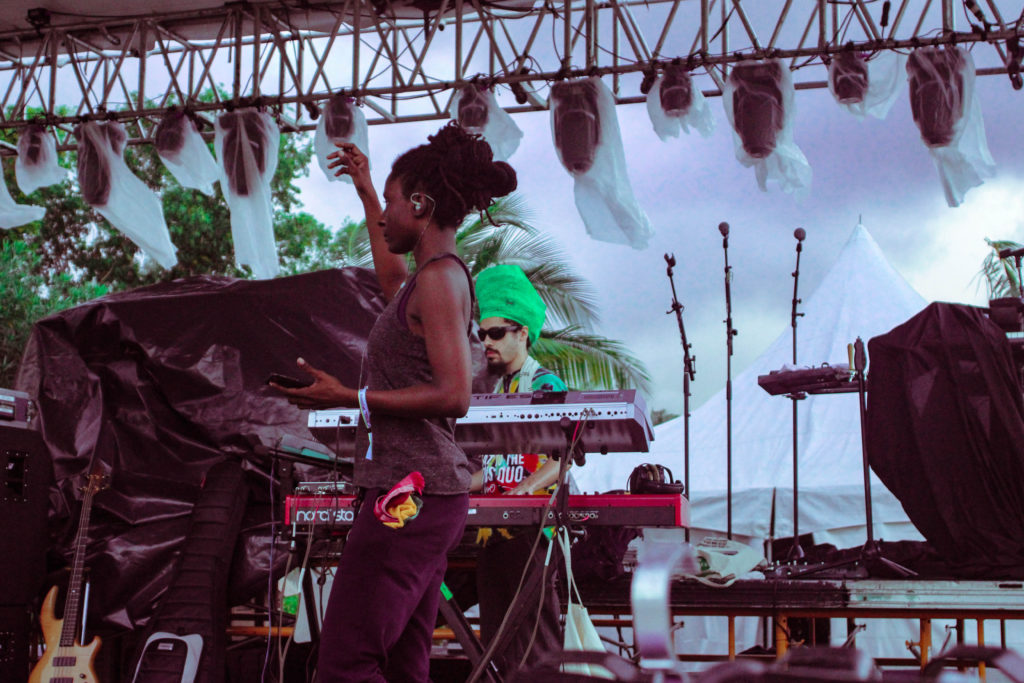
JCC & Kingston Creative announce ‘Block of Excellence’ partnership
Jamaica Chamber of Commerce and Kingston Creative announce ‘Block of Excellence’ partnership to transform Downtown Kingston
The Jamaica Chamber of Commerce (JCC) signed an MOU with Kingston Creative to form a strategic alliance that will advance the mandate of the JCC to develop an improved Central Business District, which includes a vibrant Arts District. This partnership leverages the UNESCO designation of Kingston as a Creative City of Music and will catalyse much needed economic and social benefits for residents, communities and businesses.
Downtown Kingston has a rich history, and while music, creativity and culture are deeply etched into its foundations, the city is suffering from crime and urban decay. With the recent investments by entities like Pan Jam in the ROK Hotel and the Tourism Enhancement Fund (TEF) and the City of Kingston’s steady investment in transforming Water Lane and its environs into a tourism hub, momentum is building to transform Downtown’s infrastructure, buildings, public art and green spaces, creating a ‘Block of Excellence’ in the heart of Jamaica’s capital city.
Many of the JCC’s members have been headquartered in Downtown Kingston for generations and are passionate about its redevelopment. The partners believe that everyone deserves the opportunity to enjoy a safe, livable, prosperous city. The objective of the partnership is to develop an exemplary area between Tower Street and Ocean Boulevard which will be a pilot project that shows how art, creative placemaking, infrastructure upgrades and urban regeneration can improve the space in which Jamaicans live, work and play. The vision puts people and their built environment first. The hope is that this will drive the regeneration of Downtown Kingston and accelerate innovation, monetization and the city’s overall global competitiveness.
“Our organisation is made up of businesses and professionals working together to ensure the most favourable environment for the effective and profitable operation of businesses, and to build and promote a healthy economy and improve the quality of life in Jamaica,” commented JCC President Ian Neita. “We see partnerships between the third sector and private sector as critical to success. Ultimately, our hope is that the Downtown Kingston area will become an inclusive and inspiring space to live and work, and a shining example of what civil society and corporate cooperation can achieve.”
“Our vision is that Kingston is the creative capital of the Caribbean” said Director and Art District lead Doris Gross. “As an NGO, our mission is to help creatives to succeed by providing the necessary training, resources, and environment, so that they can create economic and social value, gain access to global markets and have a positive impact on their local communities. This partnership with the JCC will start to visibly demonstrate what the City of Kingston can become, and hopefully everyone will be inspired to get involved in restoring the heart of Kingston.”
This partnership between the Jamaica Chamber of Commerce and Kingston Creative is in furtherance of the United Nations’ Sustainable Development Goals and Vision 2030 for Jamaica.
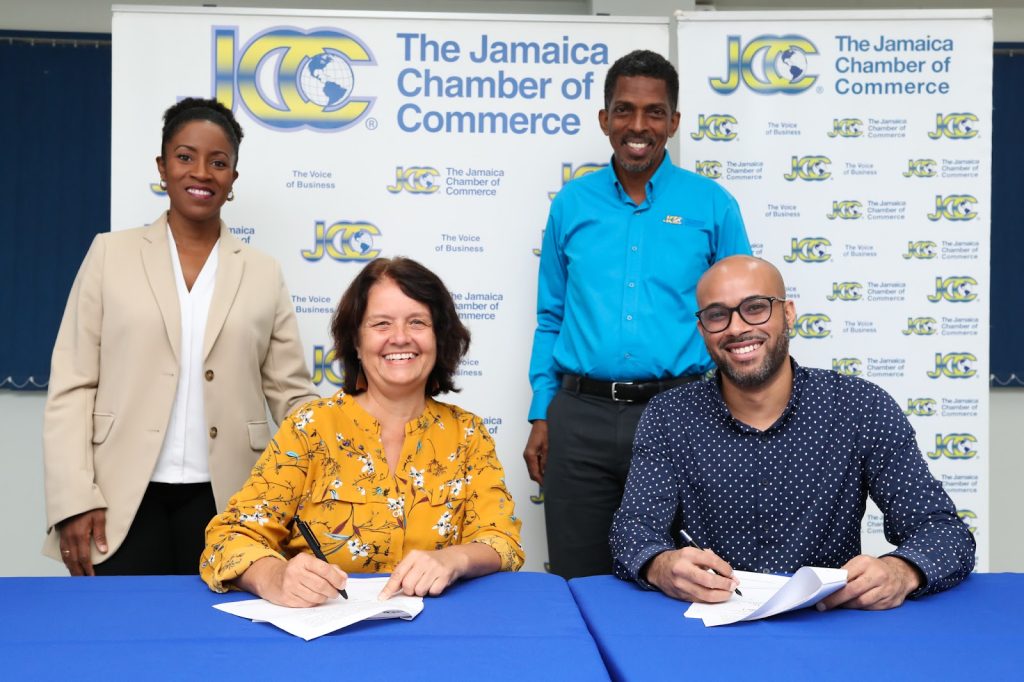
[L-R] Andrea Dempster Chung, Cofounder and Executive Director, Kingston Creative,Doris Gross, Director and Art District Lead, Kingston Creative, Ian Neita, President,Jamaica Chamber of Commerce, Jonathan Swire, Director,Jamaica Chamber of Commerce
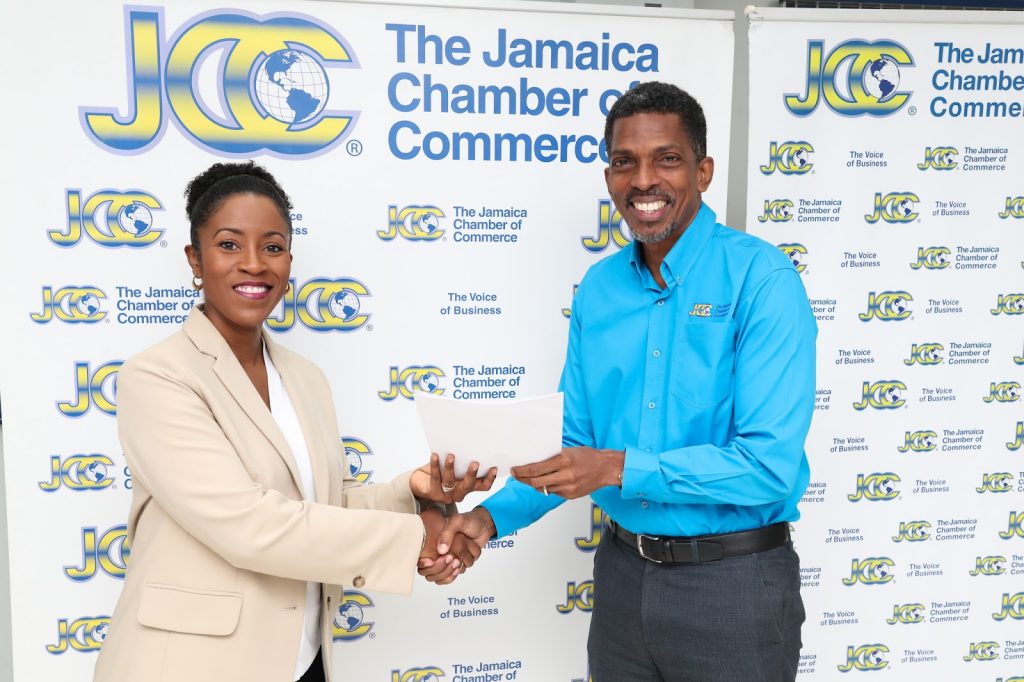
Andrea Dempster Chung (Co-Founder & Executive Director, Kingston Creative) and Ian Neita (President, Jamaica Chamber of Commerce) holding signed MoU
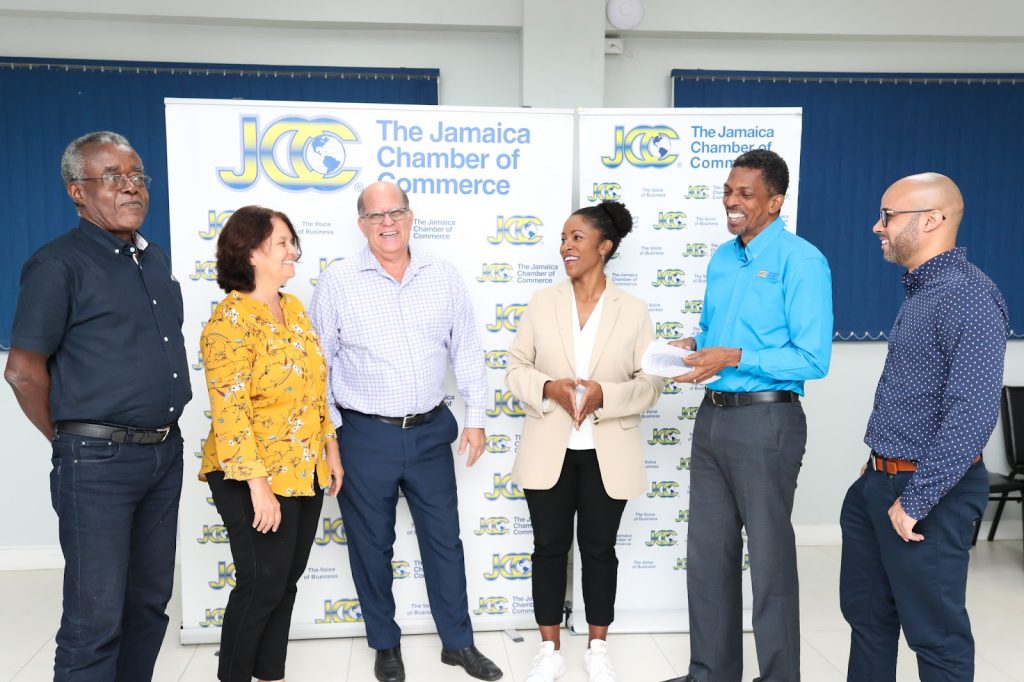
[L-R]: Trevor Fearon, Jamaica Chamber of Commerce, Doris Gross, Director and Art District Lead, Kingston Creative, Larry Watson, Jamaica Chamber of Commerce, Andrea Dempster Chung Kingston Creative, Ian Neita, President, Jamaica Chamber of Commerce, Jonathan Swire, Director, Jamaica Chamber of Commerce
